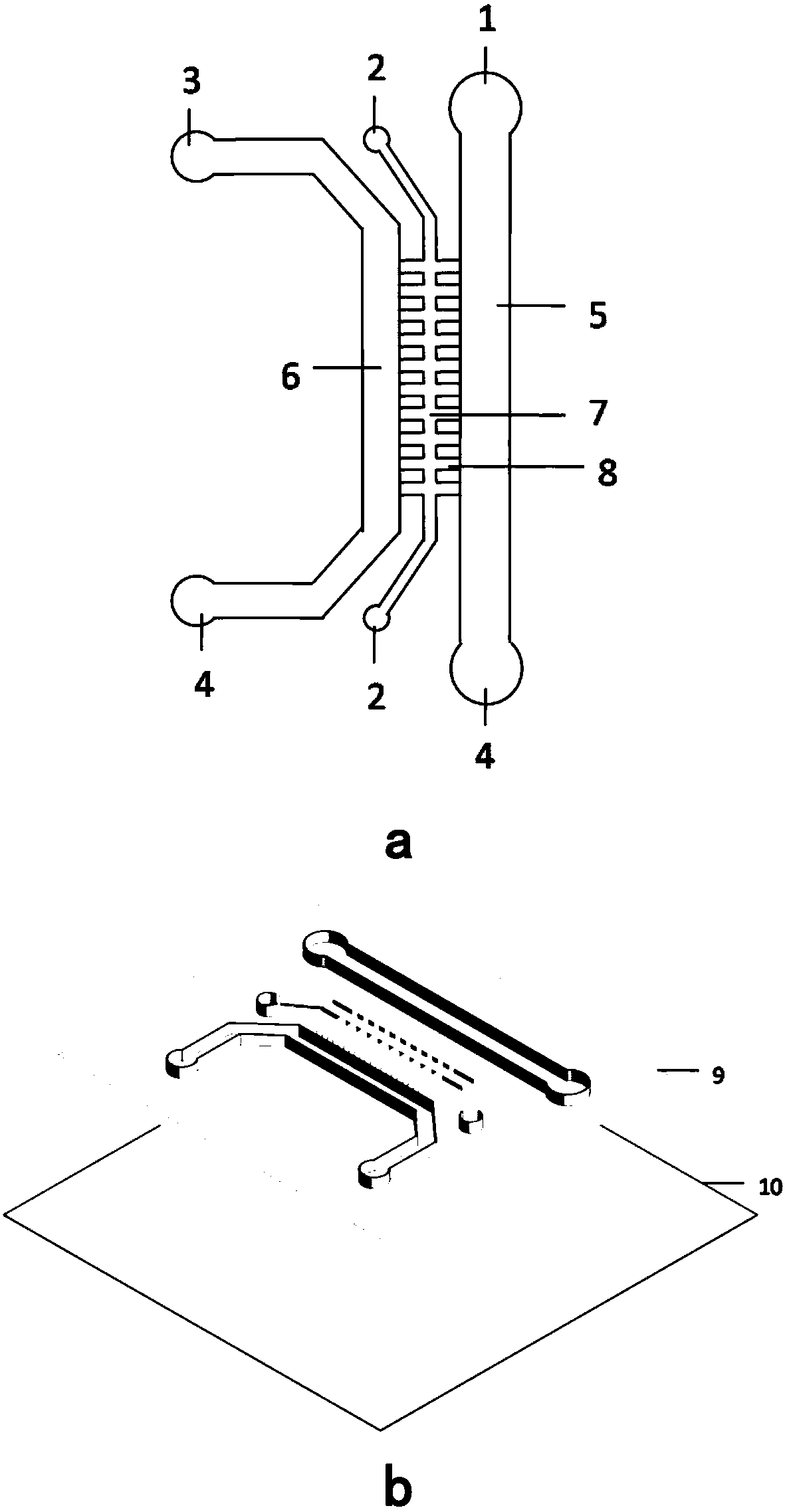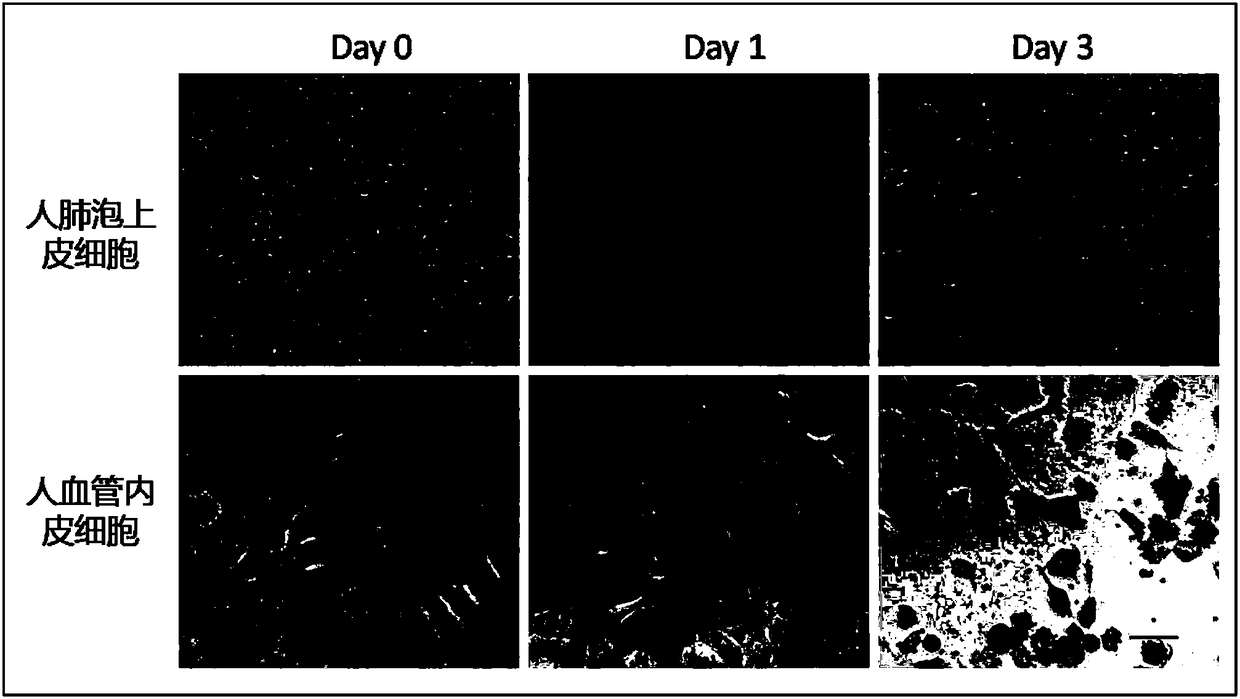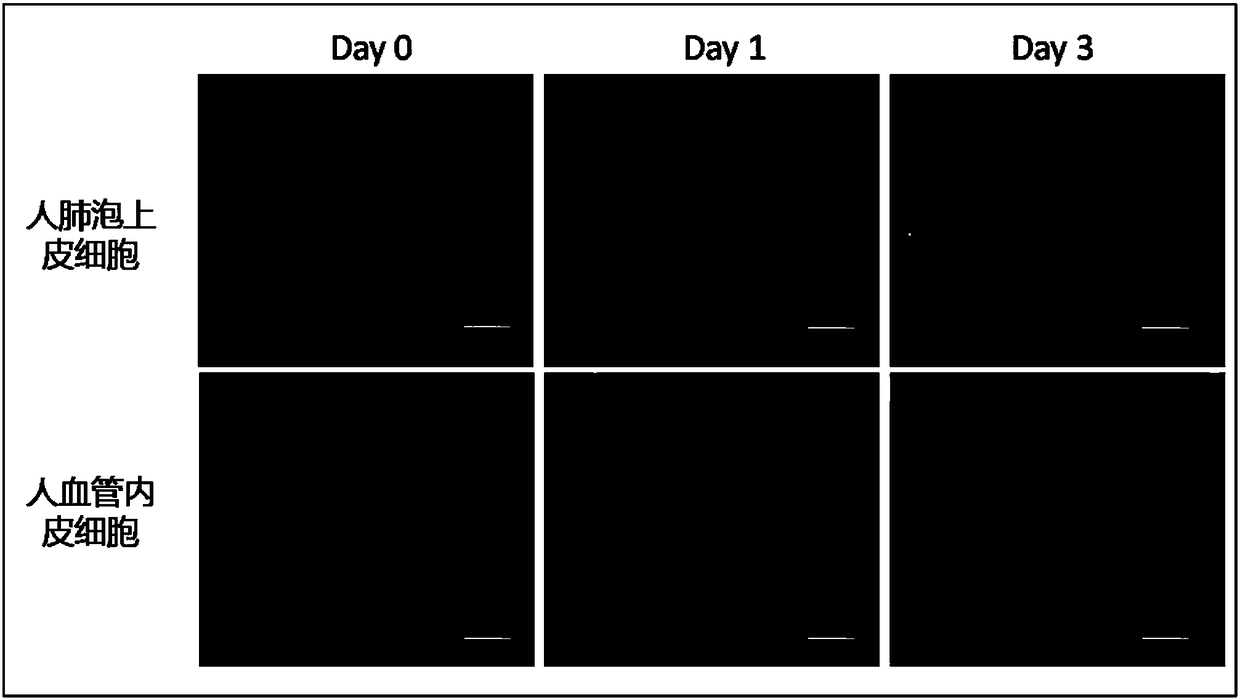Method for evaluating lung injury caused by nanoparticles based on organ-on-a-chip technology
An organ-on-a-chip and nanoparticle technology is applied in the field of nanoparticle lung injury assessment based on organ-on-a-chip technology, achieving the effect of complete functions and simple operation.
- Summary
- Abstract
- Description
- Claims
- Application Information
AI Technical Summary
Problems solved by technology
Method used
Image
Examples
Embodiment 1
[0035] Using the microfluidic chip designed and produced by the laboratory, the configuration is shown in figure 1 . The microfluidic chip is formed by bonding and sealing the overall PDMS structure 9 on the chip upper layer and the PDMS lower layer structure 10 on the chip. Liquid pool 4, vascular endothelial cell culture room 5, alveolar epithelial cell culture room 6, stroma room 7;
[0036] The two ends of the matrix chamber 7 are extracellular matrix inlet pools, the middle part is in the shape of "Feng", and the middle horizontal structure is symmetrically arranged with 7 to 10 fence structures 8. The matrix chamber connects with the vascular endothelial cell culture chamber 5 through the fence structures on both sides. Connect with alveolar epithelial cell culture room 6;
[0037] The vascular endothelial cell culture room 5 is connected to the vascular endothelial cell inlet pool 1 on the upper side and the waste liquid pool 4 on the lower side; the alveolar epitheli...
Embodiment 2
[0040] A nanoparticle-based lung injury assessment method based on organ-on-a-chip technology. The specific process is as follows:
[0041] Prepare matrigel working solution, add it to the matrix inlet pool with a pipette, 1 μl per well; add 1ml PBS buffer solution to the culture dish, put the culture dish with the fixed chip into the incubator and incubate the gel for 30 minutes to promote the formation of matrigel from the sticky The thick liquid turns into a jelly-like gel. After the gel process is over, add the fresh culture medium of the two kinds of cells from the inlet pool of vascular endothelial cells and the inlet pool of alveolar epithelial cells respectively; make the suspension of vascular endothelial cells, take 10 μl The liquid was added to the inlet pool of vascular endothelial cells, and 10 μl of cell culture liquid was quickly sucked from the waste pool to promote the cells to enter the cell culture chamber quickly and evenly under the action of gravity flow....
Embodiment 3
[0043] Fabricate a microfluidic chip, consisting of upper and lower layers of PDMS, including vascular endothelial cell inlet pool, extracellular matrix inlet pool, alveolar epithelial cell inlet pool, waste liquid pool, vascular endothelial cell culture chamber, alveolar epithelial cell culture chamber and matrix chamber and other structures. The height of the vascular endothelial cell culture chamber and the alveolar epithelial cell culture chamber is 200-1000 μm, and the height of the stromal inlet pool and the stromal chamber is 200 μm. Add 1 μl of matrigel working solution into the matrix inlet pool, and incubate at 30°C for 30 minutes. Add 20 μl of vascular endothelial cell suspension into the inlet pool of vascular endothelial cells, erect the chip at 90 degrees, and place it in a 37° C. incubator for 6 hours. The same method was used to inoculate lung epithelial cells in the lung epithelial cell culture room and stand upright for 1 hour, then put the chip flat and mov...
PUM
 Login to View More
Login to View More Abstract
Description
Claims
Application Information
 Login to View More
Login to View More - R&D
- Intellectual Property
- Life Sciences
- Materials
- Tech Scout
- Unparalleled Data Quality
- Higher Quality Content
- 60% Fewer Hallucinations
Browse by: Latest US Patents, China's latest patents, Technical Efficacy Thesaurus, Application Domain, Technology Topic, Popular Technical Reports.
© 2025 PatSnap. All rights reserved.Legal|Privacy policy|Modern Slavery Act Transparency Statement|Sitemap|About US| Contact US: help@patsnap.com



